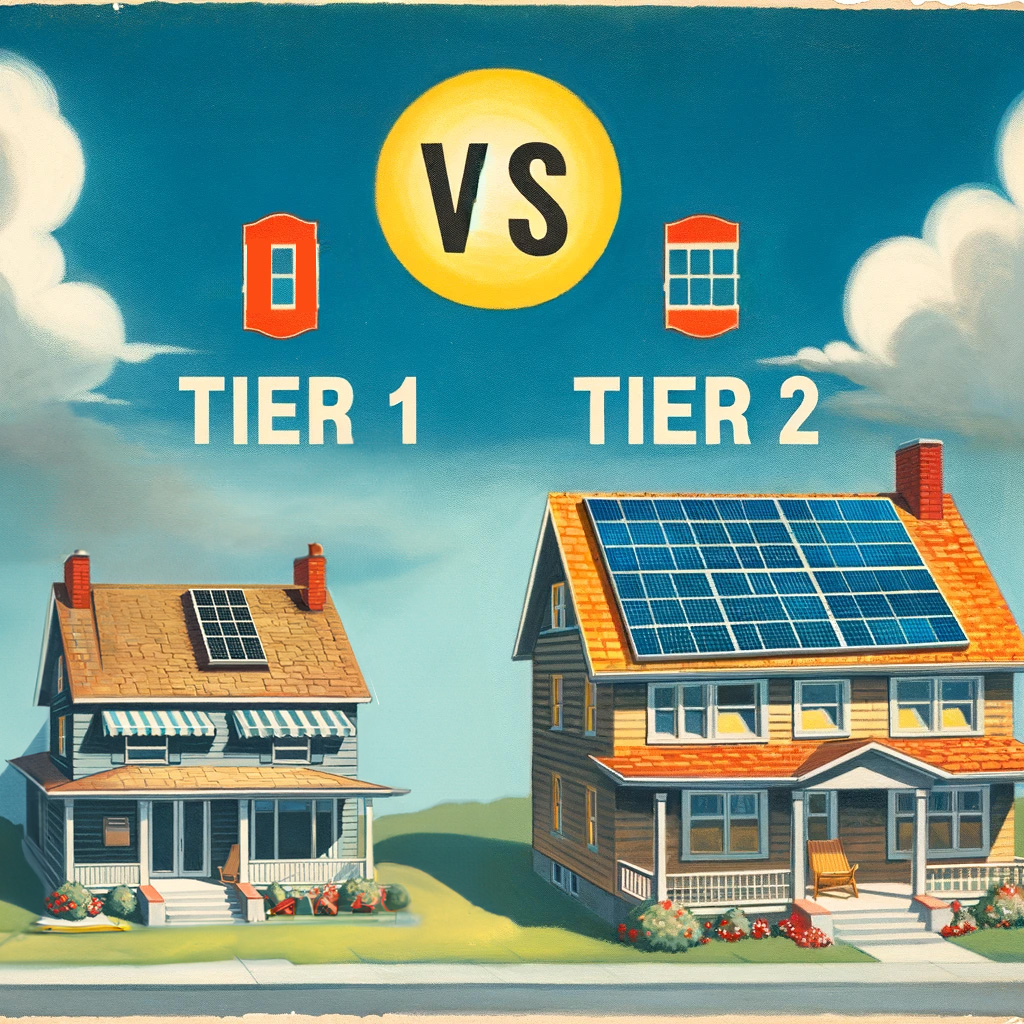
Introduction
As you explore the possibilities of solar energy for your home, understanding the different utility interconnection tiers is crucial. This knowledge will help you make an informed decision about the solar system that best suits your needs. In this guide, we’ll explain the crucial aspects of DC to AC power conversion, and the specifics of Tier 1 and Tier 2 systems, to help you on your journey to solar energy.
Understanding the DC to AC Ratio in Solar Systems
One of the first concepts to grasp in solar system design is the DC (Direct Current) to AC (Alternating Current) ratio. Solar panels produce electricity in DC, which is then converted to AC for home and grid use. The typical ratio of DC to AC in residential solar systems is about 0.85, meaning the AC output is generally 85% of the DC rating. This ratio is essential for understanding how solar systems are sized and classified into utility interconnection tiers.
Tier 1 Utility Interconnections: Simplified and Efficient
Tier 1 systems are defined for installations up to 11,764 watts, based on the DC rating. A system of this size typically has an AC output of about 10,000 watts, making it a convenient choice for many homeowners. The advantages of a Tier 1 system include a more straightforward interconnection process with the utility company, lower or no interconnection fees, and less stringent insurance requirements. This tier is often the most efficient and economical choice for homes with moderate energy needs.
Tier 2 Utility Interconnections: Catering to Higher Energy Needs
For homes with energy needs exceeding Tier 1 capacity, Tier 2 systems, starting at 11,765 watts DC, are the next step. These systems are larger and capable of providing more power, but they also involve additional considerations such as a one-time interconnection fee of approximately $400 and a $1 million personal liability insurance requirement. Tier 2 systems are ideal for homes with high energy consumption or those planning for future energy usage expansion.
Solarvironment’s Approach to Solar System Installation
At Solarvironment, we generally recommend Tier 1 systems to our customers for several reasons:
– Lower Overhead Costs: Tier 1 systems typically involve fewer costs related to interconnection and insurance.
– Faster Process: The journey through permitting and interconnection is often quicker, enabling customers to start using their system sooner.
– Optimal for Most Homes: Especially for systems just above the Tier 1 threshold, we advise staying within this tier for the most efficient and cost-effective solar solution.
That said, we don’t shy away from installing Tier 2 systems. When a customer’s energy production needs justify the additional costs associated with Tier 2 interconnections and insurance, we fully support and facilitate the installation of a Tier 2 system. Our goal is to ensure that each customer gets a solar system that aligns with their energy requirements and budget considerations.
Conclusion
Understanding the distinction between Tier 1 and Tier 2 solar systems is key to making an informed decision about your solar energy investment. Whether you opt for a Tier 1 or Tier 2 system, you’re taking a significant step towards energy independence and environmental sustainability. At Solarvironment, we’re committed to guiding you through this process, ensuring that your transition to solar energy is as smooth and beneficial as possible.
